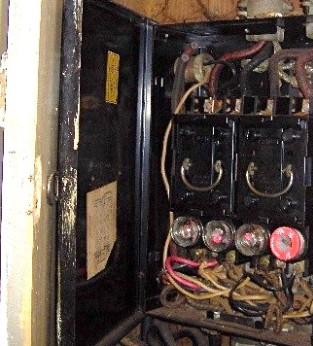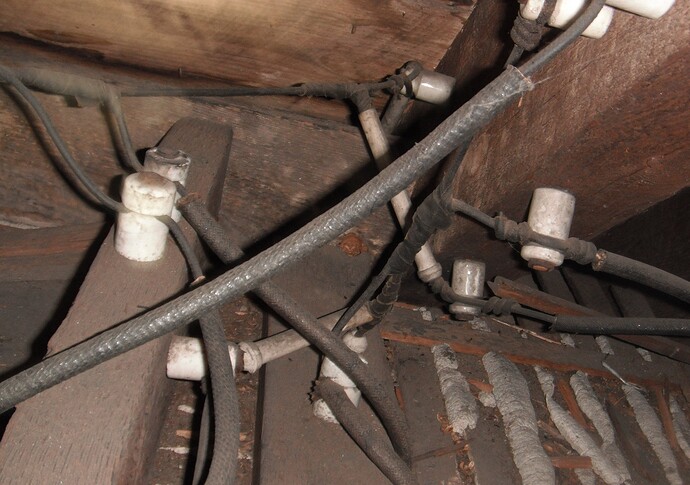You are such a douche.
The manufacturer has something to say about it.
Michael, I’m using the term most used in the industry and most understood by homeowners when explaining to clients.
Can you help answer my question with your reasoning behind tracing a branch circuit to determine if it’s overloaded from a Home Inspection point of view and SOP?
Thanks.
Robert
Most people have no clue as to what a ‘double tap’ is.
The is no limit on devices on most branch circuits in a residential application. Some ‘loads’ are to be ‘dedicated’ circuits. Get the NEC and read Article 220. The handbook is better You should be able to understand a lot of it. Read it several times.
IMHO you can not determine if a circuit is overloaded in a home inspection. You will through experience be able to see potential problems with circuits.
I do not believe that a home inspector should be required to determine loads on the electrical system.
Good day, Michael. Hope you are well and in good humor today.
As to your, “Most people have no clue as to what a ‘double tap’ is.”
I beg to differ. Inspectors reference the term ‘double tap’ continuously. The MB is a perfect example.
I concur it is not listed in the NEC regulations but, it appears easy to subject the average client to that phrase rather than explain code and the complicated terms and associations therein, I suspect, Rightly or wrongly.
Let refer to a expert on the subject of Electricity. Mike Holt.
“Is it acceptable to terminate two wires on a single screw or lug.”
Please. Can you show me the phrase “Two wires under the same terminal?”
Personally, typically/usually I refer to ‘cables as conductors,’ not wires.
Terminate, “bring to an end” Not terminal, " of or relating to an end, extremity, boundary, or terminus."
Best to be humble and help.
Regards.
Robert
The NEC differentiates between the terms cable and conductors, cables are usually a group of conductors under some sort of sheath or jacket. IMO we really shouldn’t even use the term wires unless we’re referring to something like fixture wires. Admittedly when I’m lazy I use the term wires too.
Ever heard of a terminal block?

Terminal blocks are used to terminate wires.
Bus bars. Neutral and ground bus.
Inside your panel: The Spruce.
'double tap" that some inspectors think is a safety hazard.

Does that say “individual terminal”?
Yes. 
Im confused , were we only supposed to read the highlighted area?
Here, I’ll help you:

The 180 va is used to size the service or feeder. It does not reflect the actual load that can be on the circuit.
And that calculation would not apply to a single family home, home calculations are based on the square foot area of the house.
Morning, Michael.
Hope to find you well and in good humor today.
Michael. As to your, "1 per terminal, - NEC 408.41 reference.
Please provide the association members an image and arrows pointing to or highlighting the ground condor, or strand cable wire you are referring to. A 100 - 150 or 200 amp electrical panel will do.
I personally think an image and/with illustrations would be help to visually associate the objects and meaning of said NEC 408.41 code reference.
I for one have never seen electric panel ground bus bar with the required bus bar openings and screws to supply all lighting and mechanical branch circuit ground terminations. Hm?
Looking forward to your reply and image/illustration.
Larry, you’re busted! now I know the “my old eyes” is just an excuse! 

Oops!..LOL…I’ll have to think of something else. 


Hey, wait! I was using my monocle.
That doesn’t make sense. How would you possibly have two circuits? It doesn’t matter how many conductors are on the breaker, it is still only one circuit. Either he was messing with you or he doesn’t know what a circuit is.
That was my thought too.
The electrician is right that a breaker, any, breaker, does not supply more than one circuit. The breaker is the source and a common point in a circuit. Instead of saying that the breaker is not designed for more than one circuit, he probably ought to have explained that the breaker is the source of a single circuit regardless of the number of conductors attached to it.
My initial thought was that he might have been messing with you, but then I took a step back and looked at it from the electrician’s perspective. Electricians are mechanics, not educators. Most electricians I’ve known don’t say much in situations like yours. Their strength is in knowing how to assemble electrical systems, not verbal communication.
Branch circuits can have many connection points where they go in different directions. They can be at the breaker or at any point downstream. They are most often located in junction boxes, but they can be at a breaker too. Multiple conductors do not constitute multiple circuits. The source, which is most often, but not necessarily, is usually a breaker.

